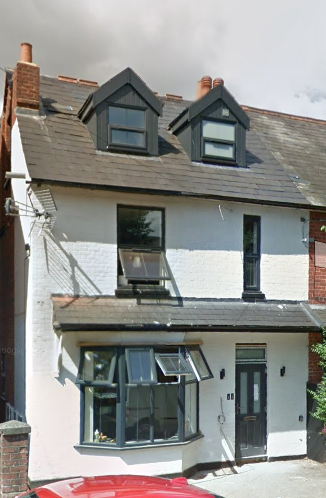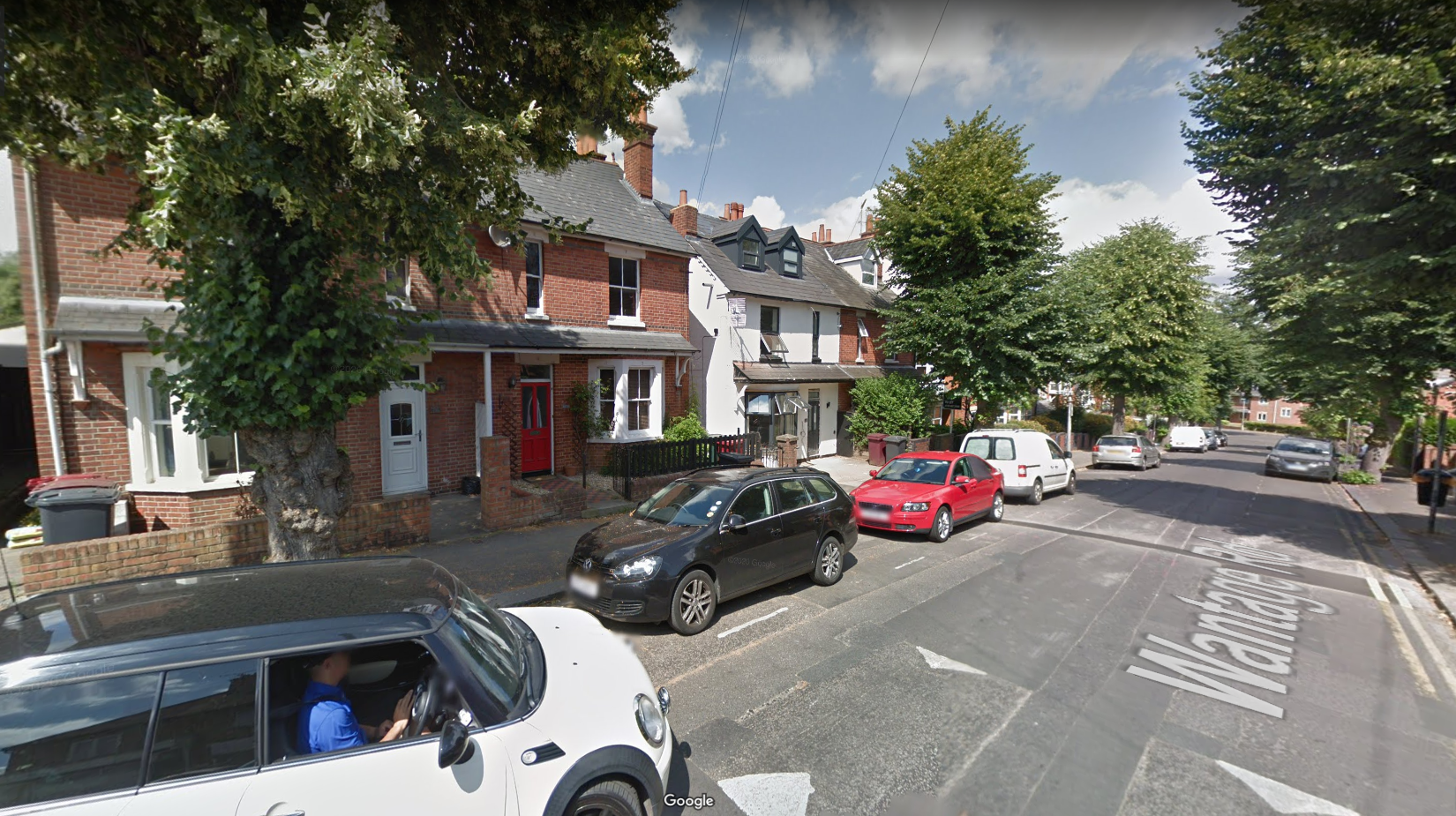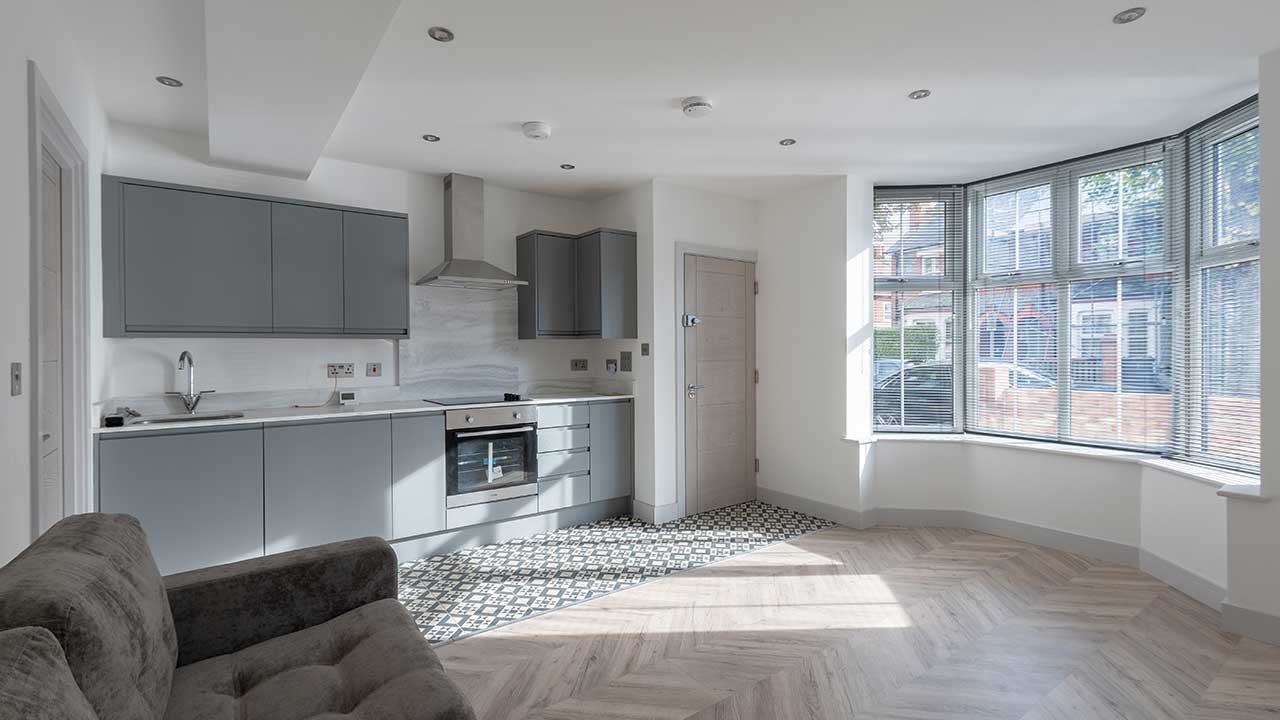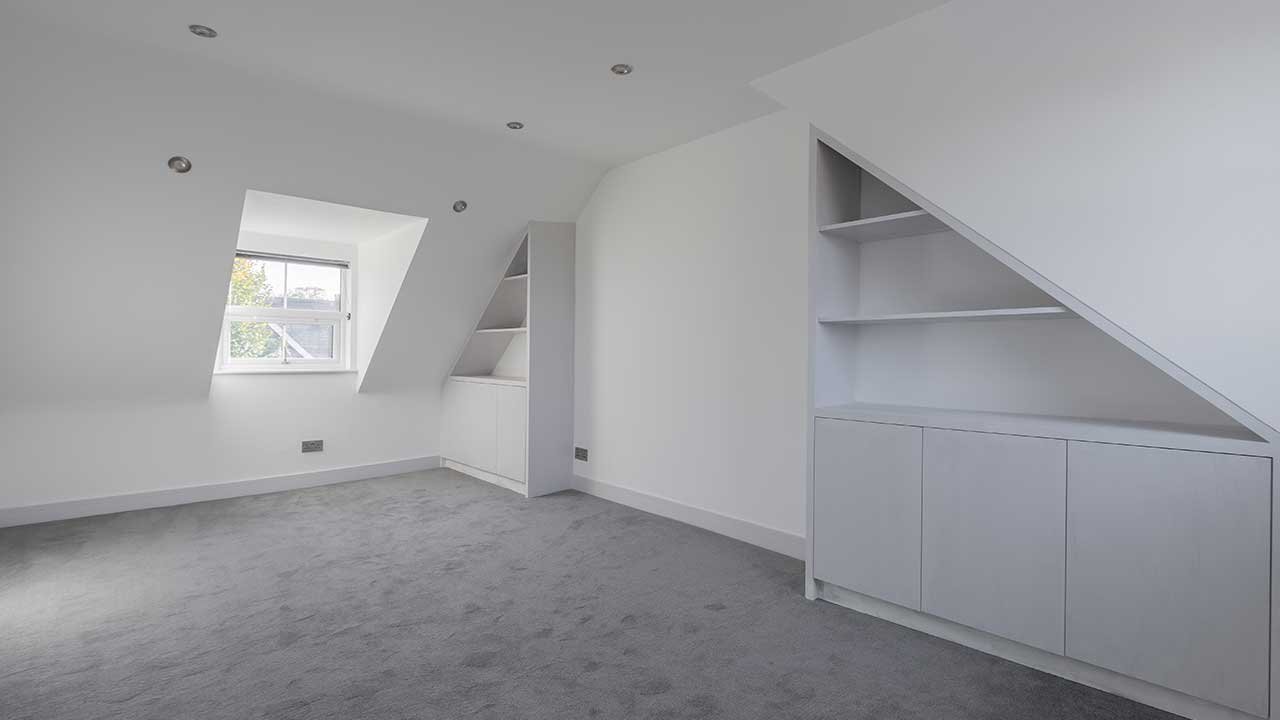Case Study: Exchange with Delayed Completion
In this interview-styled conversation, I speak to Jay Chauhan, Founder & Group CEO of Berkshire Corporate.
TM: Jay, tell me a little bit about yourself, your background and how you got into property development.
JC: Thanks for having me on Tariq. I started in property probably over 10 years ago, whilst I was working in the City. I did a variety of roles from business development to project management. But whilst I was in the City, I always had an urge to get out of the City. Pretty much as soon as I got in, I wanted to leave! The corporate life just wasn't for me. I knew it from the day I actually started, so I started investing in South Wales initially. It’s a bit of a journey from London, but I was fortunate enough to have a good team down there, consisting of a project manager, a refurb team. I was just buying small deals and thought, if they were to go wrong, I felt comfortable with the sort of the money that I might end up losing. These were small, two to three bedroom houses, that I added value to by refurbishing them, then just selling them on the open market. I did a few of these whilst still working in the City. I then decided I wanted to bring it closer to home where I would have more opportunity for capital growth. Wales is nice as an area but you’d be lucky to see a one or two percent increase over five years. Where I operate now, along the M4 corridor up to West London, I achieved significant capital growth from a small portfolio of buy to let and multi-let properties that I decided to focus on after South Wales. That allowed me to then leave my City job and focus full time on my property business. I formed Berkshire Corporate a couple of years ago, which focuses on developments.
TM: That’s great Jay and is property development your mainstay now? I think you still have your portfolio which comprises single buy-to-lets and multi-lets. What's the broad mix at the moment - like in an average week - do you spend more time on development or on portfolio building?
JC: That’s a great question. This last year (2021), we have focussed mainly on the portfolio. We also have an interest in a small lettings management agency, so that takes care of the portfolio. We've been working with a Housing Association (‘HA’), essentially helping them procure housing stock. That's taken a lot of time to get right. We’re still also doing some developments, probably not as much as I'd like to but I think moving forward this year (2022), I'm looking at forming a couple of partnerships that will enable us to do a lot more deals. We have a couple of deals already in the pipeline.
TM: That's interesting. So this HA that you're working with, they're providing an exit for either single buy-to-let stock or multi-let properties. So you can work with landlords to help them sell or let their properties to the HA? The HA will effectively take over the stock from the landlords, on three to five year type tenancies or lease?
JC: Typically, what they're keen on is up to five years’ term leases.
TM: That's around where you're operating - along the M4 corridor, up to West London?
JC: Correct.



TM: That's certainly useful to know. Now, walk me through this exchange with delayed completion deal - firstly, describe the property.
JC: It was a mixed use property - ground floor was commercial - a post-office and first was was residential - a flat. It was an owner-occupied - I think for over 35 years. The owner was operating the post office and lived in the first floor flat. It was in really poor condition - internally, you can tell it had absolutely nothing spent on it for a good few years. The owners needed an exit as they were looking to relocate to North West London, to be closer to family. I recall the business was on its last legs as well.
TM: So, quite the traditional owner-operator business in that way - they have the store downstairs and they live upstairs - it's kind of a classic kind of setting for many shops and and down the country. What is interesting about this property is that it's kind of out of sorts in a way. It’s almost like it doesn't belong in the neighborhood - as a mixed use property - given that the surrounding area is all residential properties.
JC: Exactly. It ticked all the boxes for a permitted development play - it didn’t really sit in line with the rest of the residential street. As a mixed-use property in that street, it kind of stuck out to us, which allowed us to see the opportunity what was possible with it, i.e. using permitted development rights to do what we did with the property to effectively change it completely back to residential.
TM: Jay, before we dig into that, tell us how you found this site? Was it through an agent or did you go directly to the vendor?
JC: This was a direct to vendor opportunity. It was previously listed with an agent but it wasn’t getting any traction with buyers. I think the agent was a commercial agent who was trying to market it as an existing business for sale so they were looking for a buyer willing to take over the business as a going concern. I didn't think it had much attraction or interest on that basis and we certainly weren’t interested in it as a going concern. It then came off the market and we approached the owner directly. The vendor responded and called me pretty much as soon as our letter landed on their doormat. That’s how the conversations started.
TM: Did you view the property before - I mean, before you wrote to them?
JC: We initially used Google StreetView as well as software such as Nimbus. I know the area quite well, but didn't know this property specifically. From that initial due diligence, it stood out as you mentioned before - to us, we thought, hang on a minute, this a nice residential area with a commercial shop?! It just intrigued us to look a little further before deciding whether it was worth sending a letter.
TM: There's an interesting insight there - potentially, you could be looking at commercial listings through commercial agents - where they are listing properties for sale as an existing business and find potential development opportunities there. It could be an easy permitted development play.
JC: I think there's definitely going to be opportunity with that moving forward, especially with what's happened in the last few years, with new permitted development rights that have been passed into law. I think there's an opportunity there, especially where you have what you said - potentially a commercial building being marketed. The owner is looking at selling it as a going concern. Even if you were to take a property on that has got a tenant in, subject to reviewing the terms of the lease, there could be an opportunity to obtain rental income from day one, get your permissions in place, and look to exit that lease and then be able to commence the development works, converting that unit to residential. I think there's a great opportunity there moving forward.
TM: You mentioned Nimbus - I was on a webinar with Nimbus a couple of weeks ago. They've got this feature, I'm not sure whether it's new, but I certainly thought it’s very good; very helpful - you could choose a particular area, then apply a layer and it identifies all the potential permitted development opportunities within your highlighted area. It just overlays it as a layer on the map. When you select a particular property with the permitted development opportunity, Nimbus gives you potential sizes, square footage and all the other stuff to enable you to make a quick analysis on whether there is in fact a profitable development opportunity there. You then write a letter directly to the owner.
Returning to your project, how did you start off the negotiations with the vendor? Obviously they were keen, they got in touch with you pretty quick but what happened next? Did you go to see the property?
JC: Yes. The initial conversation was along the lines of ‘we received your letter and we were intrigued so we wanted to find out a bit more’. I always try and meet them, to find out more about their situation whilst they show me around the property themselves. The best way in my opinion is to sit down with them and go through their motivations and get the backstory. That's what we did - we set up a meeting within a couple of days after that initial call. I went around the property with them then sat down with them to find out what it is they're trying to achieve and what their circumstances were; where they're looking to go, etc. That's when I found out about the plans to relocate, to be close to their daughter who was about to have a baby - they wanted to be closer to their daughter and be there for their grandchildren. They also just had enough of running the post office. I remember when I walked into the post office, they had next to nothing in stock - in their mind, they were already winding down the business and looking to move. This reinforced how keen they were to do the deal. Like I said, the building was in disrepair - it was sort of on its last legs, which meant it didn’t really work as a going concern business anymore. So yeah, it's literally meeting them to build rapport and find out a bit more about their circumstances.
TM: Am I right in thinking that they weren't quite the distressed seller, but certainly they were a motivated seller?
JC: Yeah, I'd say that's spot on. They were definitely keen to sell and keen to move closer to their daughter, but they weren't desperate. They had no lending on the property.
TM: That's an interesting point - they didn't have a lender on the property, which meant structuring an exchange with a delayed completion deal was easier. Otherwise, they would have had to obtain the lender’s permission to allow you to take possession of the property to carry out your development works.
What made you think about an exchange with delayed completion deal here rather than an unconditional deal or an option agreement?
JC: I was toying with the idea of an option agreement. The reason I went with an exchange with delayed completion was twofold. From the perspective of the vendors, they wanted contractual certainty that we would complete the purchase. The option agreement or conditional contract routes would not give them the certainty they wanted. From my perspective, the rationale behind going for an exchange with delayed completion deal was, whilst I was confident in securing the permitted development rights, I just wanted to ensure that was in fact the case. So we decided to obtain all the permissions before starting the works. We also wanted to start the works and complete it before we completed the purchase of the property from the vendors. That would enable us to obtain standard buy-to-let mortgages on the flats on completion. We agreed initially 12-months between exchange and completion - we felt that was enough time to get the permissions, then start and complete the works. As you know, towards the end, we were pushing to actually finish the works in time before the completion deadline. It wasn't too far off, but it did take a little longer than planned, mainly due to issues with the neighbour, which meant a few more hoops to jump through with the planning officer.
TM: I recall you gave them two options. One was an unconditional deal, for less money and the exchange with delayed completion deal, for the price that was closer to what they wanted. In return for waiting a little longer for most of the purchase price, in this case - 12 months, they would get a higher price. The higher price is almost like interest that you would have paid to a bridge lender if you had done a vanilla deal and completed say a week after exchange but without the hassle of applying for bridge finance, etc.
Did you pay the full 10% deposit on exchange or did you negotiate less?
JC: I think it was 5% in the end and we agreed for the vendor’s conveyancer to release this to the vendor immediately on exchange so they could use the funds straightaway. That sweetened the deal for them.
TM: So you exchanged contracts, paid your 5% deposit and then you were allowed to go into the property to commence your works - that was all part of the terms of the contract, and you had 12 months to complete. Did everything go according to plan - sounds like there were some complications?
JC: No, it never does unfortunately. We used Class M permitted development rights for the ground floor, which enabled us to create two flats in the main building. Then we used Class G on the upper floors to get another two flats. So we had four flats just under permitted development rights. We actually ended up doing the top floors as a split level bedroom rather than a studio and a one bed so ended up with three in the main block. In terms of overruns, we had some friction from the neighbor when they found out what was going on. They were putting in rejections and constantly calling the council questioning some of the design elements. You see the dormer windows in the front of the building - we did a similar design on the back. That was rejected so it put us back a bit making design amendments but it did then get approved. Because we changed some design elements, we also added an extension on the rear of the rear one bed ground floor flat. That opened up a little more space. Even the case officer who came out said, ‘sorry for wasting your time, there's no issue with this, but we just wanted to come out to appease the neighbour’. So yeah, we definitely had some delays during the construction phase. We were also running two other projects at the same time - one of which was 12 flats in Camberley. It just meant managing the build teams who had to come off this deal whilst we did the redesign to work on the other projects. It's hard to motivate a construction team to leave a site to move on to another project when they can see the finish line on the project they are already working on.
TM: Something we should also mention is that when you exchange contracts and complete, usually you pay your stamp duty land tax (‘SDLT’) within 14 days of completion - that's the norm. Here, you had to pay it within 14 days from exchange of contracts. That’s because the HMRC SDLT manual says you must pay the SDLT within 14 days from when you ‘substantially perform’ the terms of the contract. Usually substantial performance takes place on completion because that’s when you pay the bulk of the purchase price and your take ownership & possession of the property. Sometimes substantial performance can be upon exchange of contracts where for e.g., you've paid your deposit and you take possession of the property, as you did in this deal, in order to commence your conversion works. When you took possession it triggered substantial performance so you paid the SDLT within 14 days of exchange rather than completion. That’s just something to bear in mind and factor into your cash flow projections.
You funded all of the initial costs including deposit, SDLT and conversion works out of cash reserves, naturally because you couldn't raise finance, because you hadn’t completed on the purchase of property yet so couldn’t offer title to the property as security to a lender. Towards the end, when you were about to finish the works, which was very close to the 12 month deadline, I remember, we had to try and negotiate an extension with the vendor on the 12 months term.
Did you need the extra time to complete the conversion works or finalise the finance arrangement?
JC: It was a combination of both. It came close to the wire, because of the issues we faced relating to the design element and that delay in turn had a domino effect on the finance, especially valuation. We kept the vendor informed throughout so they were aware of the issues we faced so were accommodating with the extension. Their solicitor was less helpful but we got round the issues.



TM: Here are some pictures of how the flats look finished. They’re finished to a high standard. What did you do with the flats after you converted them - did you keep them or sell them on?
JC: We ended up keeping them and added them to the portfolio. We did an open viewing weekend and they let very quickly. Many of the tenants have stayed a long time, due to the quality of the finish - in fact one flat has had the same tenant from the beginning.
TM: What's the profile of the tenants - are they professionals, students?
JC: In all three of these, we have working professionals in them.
TM: That’s good. Now that you've done it once before, would you do it again - an exchange with delayed completion deal - or is it one of those where you’d never do one ever again?
JC: Generally, as a deal structure, yes I’d definitely do an exchange with delayed completion deal again. There's always aspects of any deal that you'd prefer to do differently, with the benefit of hindsight. I remember when we got into the legal phase, their solicitor was, let's just say a ‘tough cookie’ and you did a good job managing the legal phase. I think, whilst I'll be keen to do an option on something like this, I’d definitely still give exchange with delayed completion a go. Then there’s aspects of the design - we could have tried to satisfy the permitted development rights requirements a little earlier in the process. Having a better channel of communication with the professional team is something else I would improve on - just to make sure we're all on the same page and working towards the same goal, to avoid any unnecessary delays.
TM: What you say about the choice of maybe going with an option agreement instead - I think the downside with that is you wouldn't have been able to go into the property to start the works prior to completion.
You could perhaps have done a hybrid approach - option agreement -> exchange contract -> delayed completion, with access between exchange and completion to carry out the works. The whole period from exchange of option agreement through to completion could still be 12 months, if that’s the longest the vendor would agree to. That way, during the time between exchanging the option agreement to triggering the option, you could sort out the permitted development rights, which would take say 2 months. Once you’ve triggered the option, which is when you exchange contract, you start your works and finance arrangements and you then have 10 months to complete the works and finance. I usually suggest this approach even to clients who are looking to, for e.g., acquire a property that is potentially going to become a multi-let property (HMO). This way, you have security through the option agreement that the vendor won’t gazump you once you’ve obtained planning permission for the conversion works.
JC: That’s a good approach and I would certainly look to do it that way.
TM: Finally, are there any other tips you want to share for someone thinking about this type of deal?
JC: If you’ve managed to get yourself in a position with an opportunity like this, just remember to always consider what the vendor’s circumstances are and try to delve deep into what they're trying to achieve. We can all sit behind a computer screen to analyse a deal and have an idea on numbers but some of the best deals are done when you've really considered what the vendor’s circumstances are and what they're trying to achieve. That creates a win-win outcome for all parties.

